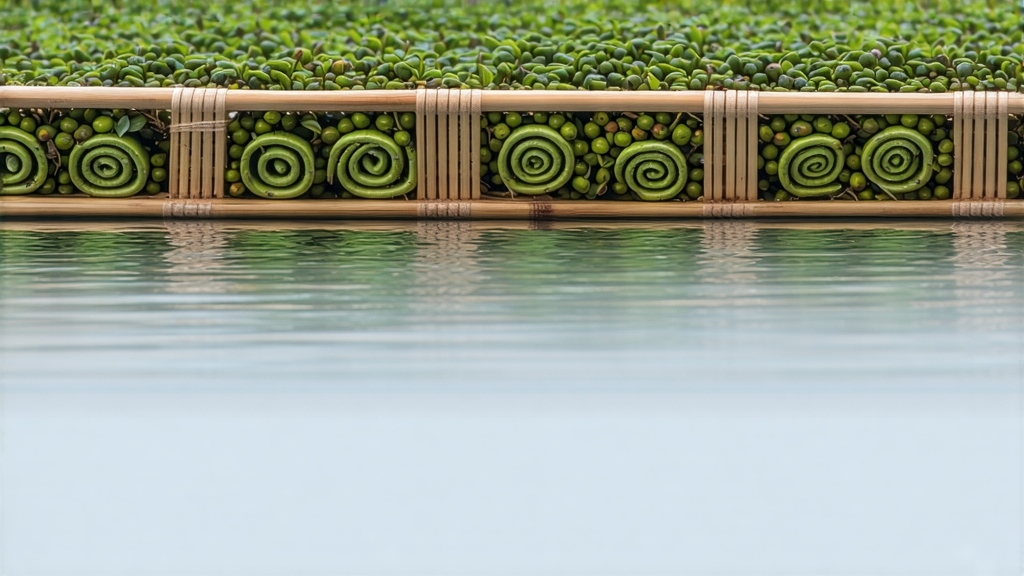
Among the jade pantheon of Chinese green teas, none carries the romance of lake and orchard quite like Biluochun. Its name—literally “Green Snail Spring”—evokes the tight spiral of each leaf and the season in which it is born. Foreign drinkers often meet it first through its perfume: a sudden rush of white peach, apricot blossom and sweet grass that seems impossible to coax from a single plant. Yet this fragrance is not added; it is the echo of an ecological marriage between tea bushes and fruit trees that has endured for a thousand years on the mist-laden islands of Dongting Mountain in Taihu Lake, Jiangsu Province.
Historical scrolls credit Biluochun’s discovery to the Kangxi Emperor’s southern tour of 1699. According to the tale, the monarch was served a cup of rough-looking local tea whose aroma so delighted him that he asked its name. Told it was called “Xia Sha Ren Xiang” (“Scary-fragrant”), the scholar-emperor judged the moniker inelegant and renamed it Biluochun on the spot. Whether apocryphal or not, the story signals the tea’s entry into court culture and its subsequent rise among the “Ten Famous Teas” of China. By the late Qing, Suzhou merchants were exporting it down the Grand Canal to the foreign concessions of Shanghai, where European diplomats praised its “springtime in a cup.”
Botanically, Biluochun is almost exclusively the small-leaf Camellia sinensis var. sinensis cultivar “Fuding Da Bai Hao,” grafted onto local Dongting stock. The microclimate matters as much as genetics: the lake acts as a thermal regulator, delaying spring budding until early April, when daytime temperatures hover around 18 °C and nightly fog slows photosynthesis, concentrating amino acids. The slopes, rarely steeper than 25°, are terraced with granite retaining walls built during the Ming; their mineral drainage lowers tannin and heightens sweetness. Crucially, every third row is still interplanted with peach, plum, loquat and bayberry trees. When these bloom they shower the tea bushes with pollen and volatiles that the leaves absorb, creating the signature fruity bouquet no other green tea replicates.
The picking calendar is ruthless: only the bud and the immediately adjacent half-expanded leaf are taken for the top grade, and only for the ten-day window after Qingming festival. A skilled picker can gather just 600 g of fresh leaf in a dawn shift; 50 000 of these shoots—roughly three hours of work for twenty people—will yield 500 g of finished tea. The leaf must reach the village workshop within two hours, before enzymatic oxidation edges past 3%. There, the ancient “kill-green” ritual begins.
Unlike the basket-charring methods of Longjing or the drum baking of Taiping Houkui, Biluochun is pan-fired on thin, cast-iron woks whose curved walls echo the snail shape the leaf will later assume. The master, barefoot for traction on bamboo slats, keeps the wok at 160 °C for ninety seconds, tossing the leaf with a rhythmic clap that sounds like light rain. Hands—calloused yet sensitive—press the shoots against the metal just long enough to denature polyphenol oxidase without bruising the downy tips. A second wok, cooler at 100 °C, follows for three minutes; here the spiral is literally hand-rolled. Using three fingers, the crafter bends each bud into a tight shell, simultaneously shaping and drying until moisture drops to 20%. A final rest on rice-paper trays above a charcoal brazee set at 60 °C completes the process, locking in 4–5% residual water and a silvery down that glints under light.
The finished leaf is an objet d’art: 1.2 cm long, 0.4 cm wide, curled like a snail shell and cloaked in white pekoe. When dropped into a tall glass—the preferred brewing vessel—it sinks, then slowly pirouettes upward as trapped air escapes, a dance Chinese poets call “the white cloud rising from the green peak.” Western cuppers sometimes mistake this down for mold; in truth it is the trichome that stores the aromatic esters responsible for the tea’s nectar-like cup.
To brew Biluochun properly, begin with still spring water low in calcium; 80 °C